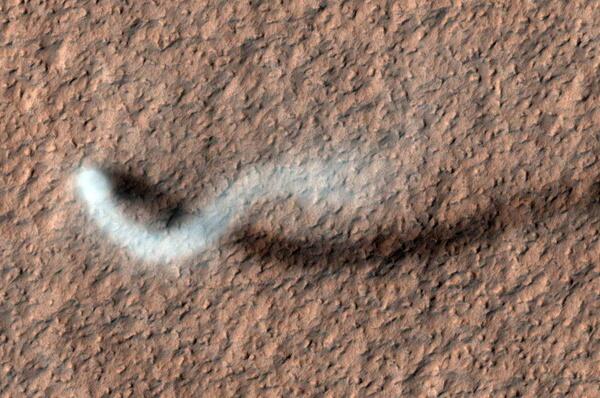Dust devils are whirlwinds that range from small surface disturbances to towering columns of dust. They occur in several locations on Earth, but our planet isn’t the only place in the solar system where these storms can be found — dust devils have also been spotted by orbiters and landers on Mars. New research into these seemingly isolated events has revealed that they’re not as small-scale as they seem, as dust particles lifted by winds can not only remain suspended in the atmosphere, but may also be transported vast distances to affect weather and conditions on a much larger scale.
The work, carried out by Jan Raack of the Open University and a team of international collaborators, was presented Monday at the European Planetary Science Congress 2017 in Riga, Latvia. While conditions on most planets can’t be easily replicated or studied on Earth, dust devils are one exception; Raack and his team planted themselves in the path of these whirlwinds to sample dust particles at different heights to better understand how they transport dust. They learned that small dust particles lifted into the air by a dust devil can have far-reaching effects on air quality and weather, illustrating the role dust devils play in planetary climates, whether on Earth or Mars.
In fact, dust devils likely influence martian weather and conditions to an even greater degree, given that the majority of the planet’s surface is arid and contains a higher dust content than Earth. Dust devils are believed responsible for about half of the dust present in the martian atmosphere; they can also grow several times larger than Earth’s dust devils. At such sizes and intensities, they could post a concern for rovers, landers, and eventually humans on the surface of the planet.
They found that the largest dust grains stayed near the bottom of the dust devils, while the smallest rose to the top. From there, 60-70 percent of the smallest dust grains (with diameters less than 0.001 inch [0.03 millimeter]) remained suspended in the air, even after the dust devil had passed. Winds could then transport those particles over vast distances, affecting the climate elsewhere.











